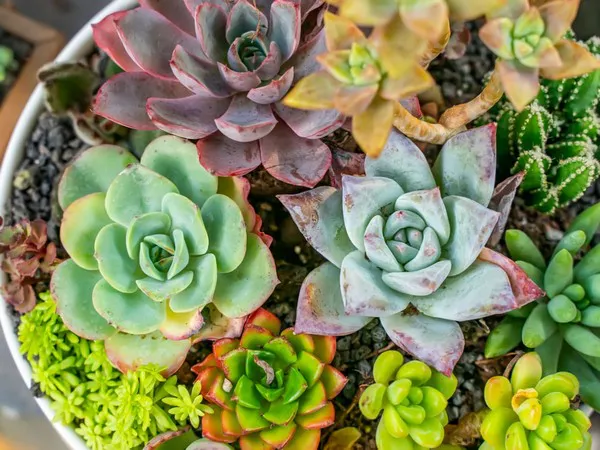Succulents, with their captivating shapes and low-maintenance care requirements, have become popular indoor and outdoor plants for many gardening enthusiasts. As these hardy plants grow, they may outgrow their pots, leading to root-bound conditions and hindered growth. Repotting small succulents is a crucial aspect of their care, ensuring they have adequate space to flourish and continue to grace your living spaces with their beauty. In this comprehensive guide, we will walk you through the process of repotting small succulents, along with essential tips and promote their health and vitality.
Right Time to Repot Small Succulents
1. Root Bound Signs: When the roots of a succulent begin to outgrow the current pot, you may notice the plant becoming root-bound. Look for signs such as roots emerging from drainage holes or tightly circling around the root ball.
2. Overcrowding: Succulents naturally propagate and produce offsets or “pups.” When these offsets grow large enough, they can crowd the mother plant and require repotting.
3. Growth Stagnation: If your succulent seems to have stopped growing or displays stunted growth, it may be an indication that it has exhausted the nutrients in its current potting mix.
Essential Supplies for Repotting
Before you begin the repotting process, gather the necessary supplies:
1. New Pot: Choose a pot that is one size larger than the current one, with drainage holes to prevent waterlogging.
2. Potting Mix: Use a well-draining succulent or cactus potting mix, or create your own mix by combining regular potting soil with perlite or coarse sand.
3. Trowel or Spoon: A small gardening trowel or spoon will be helpful in gently removing the succulent from its current container.
4. Gloves: Wear gardening gloves to protect your hands, especially if your succulent has spines or sharp edges.
Step-by-Step Guide to Repotting Small Succulents
1. Preparation: Water your succulent a day or two before repotting. Moist soil will help hold the root ball together during the transition.
2. Remove the Succulent: Carefully turn the pot upside down, supporting the plant with your hand. Gently tap the bottom of the pot to loosen the root ball and slide the succulent out.
3. Inspect the Roots: Examine the roots for any signs of rot or damage. Trim off any dead or unhealthy roots with clean, sharp scissors or pruning shears.
4. Prepare the New Pot: Add a layer of fresh potting mix at the bottom of the new pot. Ensure the pot has proper drainage holes to prevent waterlogging.
5. Position the Succulent: Place the succulent in the center of the new pot, making sure it sits at the same depth as it did in the previous pot.
6. Fill in with Potting Mix: Carefully fill the gaps around the succulent with fresh potting mix, ensuring there are no air pockets.
7. Settling In: Gently press down the soil around the base of the succulent to help it settle into its new home.
8. Water Sparingly: Wait a few days before watering the newly repotted succulent to allow any damaged roots to heal. When you water, do so sparingly to avoid overwatering.
Optimal Succulent Care
1. Watering Tips for Succulents: Succulents prefer infrequent, deep watering rather than frequent light watering. Water thoroughly and allow the soil to dry out between waterings to prevent root rot.
2. Sunlight Requirements: Most succulents thrive in bright, indirect sunlight. Place them near a south-facing window or provide filtered sunlight to prevent sunburn.
3. Choosing the Right Pot Size: As your succulents grow, they may need larger pots. However, avoid excessively large pots, as they can lead to waterlogged soil and root rot. Choose a pot that allows the succulent some room to grow but still fits the size of the plant.
4. Fertilization: While succulents are relatively low-maintenance, they do benefit from occasional fertilization during their active growth phase. Use a balanced, diluted liquid fertilizer specifically formulated for succulents.
5. Pest Management: Keep an eye out for common succulent pests such as mealybugs and spider mites. Regularly inspect your plants and use natural remedies or insecticidal soap to manage infestations.
Conclusion
Repotting small succulents is a rewarding and essential aspect of their care, ensuring they have ample space for healthy growth and development. By understanding the signs of when to repot and following the step-by-step guide, you can provide your succulents with an environment where they will thrive and continue to bring beauty to your indoor and outdoor spaces. Remember to incorporate related topics like proper watering, sunlight requirements, and pest management to ensure your succulents remain vibrant and resilient, delighting you for years to come.


